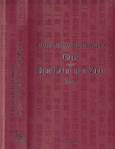Archäologie DCLXIV : Unidentified Vietnamese Women and Children in My Lai Before Being Killed in the Massacre, 16 March 1968

By Ronald L. Haeberle [Public domain or Public domain], via Wikimedia Commons
On March 16, 1968, American soldiers of Charlie Company, were sent on what they were told was a mission to confront a crack outfit of their Vietcong enemies. They met no resistance, but over three to four hours killed between 347 and 504 unarmed Vietnamese civilians. Victims included men, women, children, and infants. Some of the women were gang-raped and their bodies mutilated. The massacre, which was later called "the most shocking episode of the Vietnam War", took place in two hamlets of Sơn My village in Quang Ngai Province. These hamlets were marked on the U.S. Army topographic maps as My Lai and My Khe.
Ron Haeberle was a combat photographer in Vietnam when he and the Army unit he was riding with — Charlie Company, 1st Battalion, 20th Infantry Regiment — landed near the hamlet of My Lai on the morning of March 16, 1968. Villagers weren't alarmed; American GIs had visited the region near the central Vietnamese coast before, without incident. But within minutes, the troops opened fire. Over the course of the next few hours, they killed old men, women, and children. They raped and tortured.
When the photographs of the My Lai massacre were first published, many could not believe what they depicted. One reason was this: They did not show American soldiers in the act of killing.
For a long time, the man who shot the pictures, Ron Haeberle, said no such images existed. In 2009, Haeberle admitted that he destroyed a number of photographs he took during the My Lai massacre. Unlike the photographs of the dead bodies, the destroyed photographs depicted Americans in the actual process of murdering Vietnamese civilians.
Einige Photos hier: vintage everyday
For more images, visit FOTO.
Das Massaker an 504 Zivilisten wurde von der US-Armee zunächst vertuscht. Erst durch Recherchen des investigativen Journalisten Seymour Hersh gelangte das Geschehen an die Öffentlichkeit, wobei die Veröffentlichung der Reportage zunächst für etwa ein Jahr von sämtlichen Medien abgelehnt worden war. Hersh erhielt 1970 den Pulitzer-Preis, die Veröffentlichung trug maßgeblich zum Wandel der öffentlichen Meinung über den Krieg bei.
View on YouTube
gebattmer - 2018/03/16 17:59



























































Trackback URL:
https://gebattmer.twoday-test.net/stories/1022647692/modTrackback